LEAFLET AND WALK INSTRUCTIONS
Leaflets with a map and walk instructions are available, on request, from Cosgoves shop. Alternatively an A4 PDF of the leaflet can be opened and then printed off via the link below.
To download an A4 PDF of the heritage Trail leaflet click here.
PAST AND PRESENT SITES ON HERITAGE TRAIL
Further information on these and other sites of interest, in Rimington and Middop can be found throughout the website.
1. Bustards Farm
Late 18th century building on the list of buildings of special architectural or historic interest (i.e. ‘listed’).
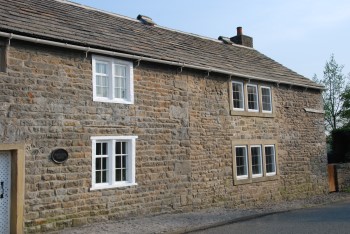
2. The Old Farmhouse
Mid-18th century building, also listed.
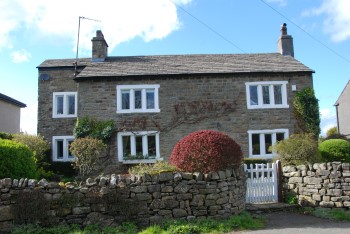
3. Pendle Garage
This was run by Edgar Duckworth. During the Second World War he was running fourteen wagons carrying materials for the war effort and undertaking contract work for Bowland Rural District Council. The Cosgrove business was run from part of the garage before the garage was replaced by the current shop in 2004
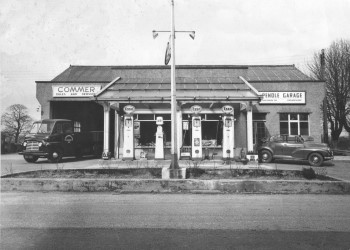
4. The Black Bull
Several different pictures survive of the hostelry in its former days of lime-washed walls and a thatched roof. This was all demolished in early 1901 and work began on the new building a month later.
It was called 'The Haven' for a few years in the 1920s – the 'ideal holiday home'. It reverted back to being The Black Bull Hotel in 1926.
In the 1960s and 1970s it was run by Bill and Marion Butler and became a very popular venue for wedding receptions in this period. They could be hosting two receptions on a Saturday.
Much later the function room became a Museum of Transport created by Michael Blades which featured a lot of railway memorabilia.
For many years the Black Bull was the starting point of the ex-servicemen's parade to the Memorial Institute on Remembrance Sunday.
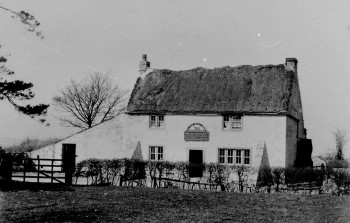
-
5. Holmelea
There was a general store in what is now Holmelea for a long period. Early pictures show it had a storage room above the ground floor grocery for the big bags of flour, grains and other bulk commodities the customers would want. Francis Duckworth was born here (see Stopper Lane)
In the 1930s, when Mr Bracewell was owner, he ran the grocery shop at the front and a tea room area at the back. Much later the shop was owned by a maker of leather goods. He sold wares made of strong leather such as belts and handbags.
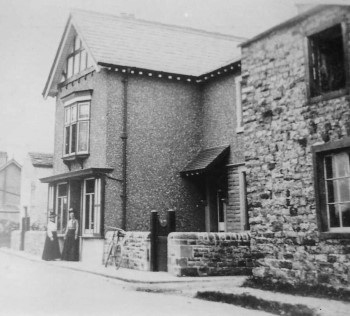
6. The Old Manor House
This was possibly the last house in the district with a thatched roof. In June 1935 the parish council sent a letter to the then owner, H.M. Walton Esq., expressing the hope that the property, then undergoing repair, would remain a thatched cottage ‘as it is one of the most picturesque old dwellings in Ribblesdale.’ Other Rimington buildings photographed with a thatched roof were the Black Bull Inn, Yew Tree Farm, Newby, and what are now Abbotsdene and Holmelea.
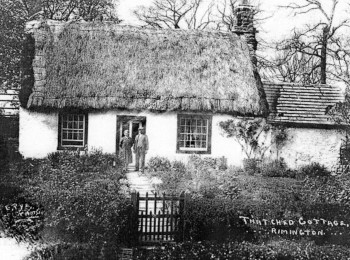
7. Skeleron Lead Mines
On the hillside overlooking Hollins Farm, are the remains of at least three bell pits, probably of sixteenth and seventeenth century origin. Further on there is more evidence of mine workings. The earliest reference to the mine is that William Pudsey of Bolton Hall was mining there during the reign of Queen Elizabeth 1 (1558-1603). The bell pits probably relate to that period. There is a story that William Pudsey counterfeited coins, using silver mined at Skeleron. He is then supposed to have escaped, on horseback, soldiers pursuing him and that he leapt over the Ribble at Rainsber Scar, known locally as ‘Pudsay’s Leap’. He is also supposed to have been pardoned by his godmother, Queen Elizabeth. It is not known how much of this story, if any, is true.
Later, at the time of Charles 11’s restoration William’s grandson, Ambrose Pudsay, petitioned the king, around 1660, to have the right to work in the north 3 mines (including Skeleron) that he had previously concealed. This and a further petition were apparently unsuccessful and he had to sell off much of his estate, including the mines.
There is further evidence of mining in the period 1764-80. There was significant activity between 1822 and 1892 with brief attempts to rework the site in the first half of the 20th century. Further information about the mines can be found in the Archaeological section of the website.
Just before Skeleron lane is reached there is a quarry on the LHS.
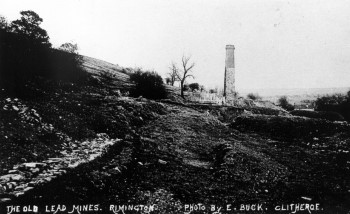
8 Mines Cottage
This can be viewed ahead whilst walking along the remains of the mines. It was occupied by the Mine Agent (Manager) and in the 1881 census it was occupied by John Borlase and his family, from Cornwall. By 1891 it was occupied by his son James – Mining Engineer.
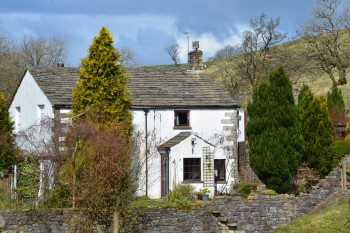
9 Water Trough
This water trough, on the right, just before Martin Top Chapel is one of several in Rimington and Middop. Another one on the trail is opposite the road end at Howgill, on the RHS at the bottom of the slope.
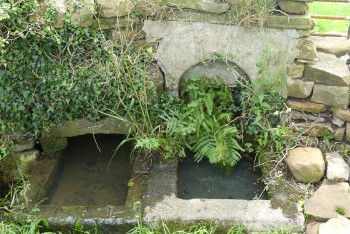
10 Copley Shop
Like all the other shops in Rimington this is now a house, Copley Cottage.
It was being run by Edwin Townson by the time he was 23 or so in 1861 right up to his death in 1893. The only known picture of the shop shows a family group stood outside it. The girls and boys are all in dark clothes which suggests that they are in mourning and the picture was taken shortly after their father died aged 56. His eldest daughter, Sarah Jane, was running the shop in 1901.
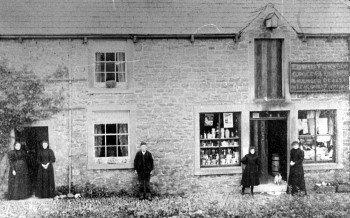
11 Martin Top Chapel (Salem Congregational Chapel) and attached Manse
The chapel, and the attached manse from the early 19th century, are listed.
In the centre of the façade is a sundial tablet inscribed "Time flies swift away" and its opening date, 1817 is spelt out in pebbles at the front gate.
The graveyard behind it was opened in 1908 and the first burial was in 1909.
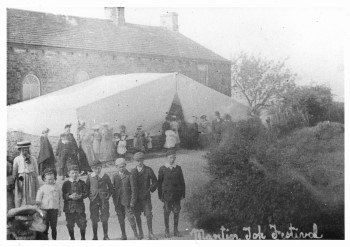
12 Howgill Mill
Spinning and weaving took place here from about 1790 to 1858. It was small water-powered factory on Howgill Beck probably established about 1790 by Thomas Hague Newcome and Samuel Westerman, cotton weft spinners. The partnership was dissolved in 1795 and Westerman continued the business until his death in 1828. By 1840 the mill had been leased by Westermans to Thomas Dawson. In the 1850's the factory was being used for hard waste spinning and weaving. Machinery included devils, cards, billies, 20 calico looms and 8 sheeting looms, with additional power from a 9hp high pressure engine. At this time the workforce was probably less than twenty. Following the bankruptcy of James Moorhouse in 1858 manufacturing appears to have ended. The mill had been demolished by the end of the nineteenth century however there were still some remains there in the 1960s. The main remains are at the northern end of Robin Lane, adjacent to the beck. There is a two storey, double gabled house, which may have been partly used as accommodation for the mill apprentices. The factory was attached to the northern gable which shows evidence of having been an internal wall. Earth-works, marking the site of the goit and reservoir, can be observed east of the house. Upstream, close to Howgill Bridge, is the much altered weir.
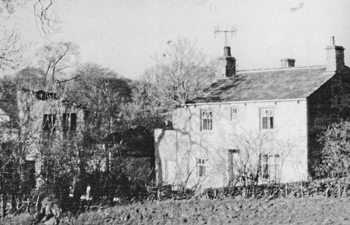
13. Yew Tree Slaughterhouse.
The slaughterhouse at Newby was one of the last private slaughterhouses in this area before the Ministry decided to have fewer, larger abattoirs. The last butcher was Thomas Bairstow who died in 1957.
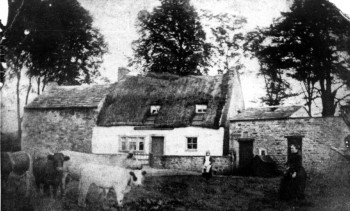
14. Rimington Corn Mill
A water mill existed on, or near this site, at the close of the thirteenth century. Precise records of millers commence in 1803 and for most of the nineteenth century Thomas Bank and his family worked the mill. By the beginning of this century the buildings were disused. The site is on the east side of Rimington Bridge. The main survivor is a two storey random stone structure built into the hillside. Recent lean-to sheds are attached to the remaining portion of the mill. The tail race, marked by an arched stone opening, is situated between the stream and the mill. There is a drained mill pond to rear of building. The goit extends approximately 650 metres east to a weir on Rimington Beck, where the remains of a sluice gate can be seen. The track running alongside the goit was probably built to service a lime kiln which formerly stood in the field north-east of the mill.
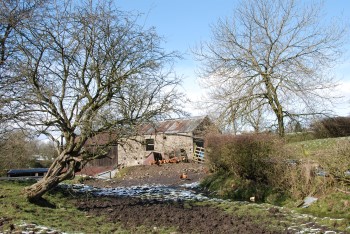
15 Rimington Memorial Institute
Rimington Memorial Institute (the village hall) was formally opened on 29 October 1927. It is an official War Memorial and is on the Imperial War Museum’s register of war memorials (Ref. 42601).
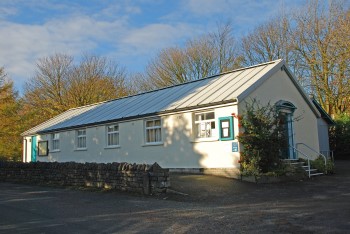
16 Rimington School
Rimington National School, opened some time after Newby School, at what is now Greystones in Stopper Lane on a date presently unknown but possibly in the early 1840s when it is identified as 'New School and Garden' in the 1846 Tithe Award Schedule.
There was a good number of scholars in the village to fill both schools right up into the 1870s but then the number dived by the 1880s as families moved away to the towns and cities or migrated abroad. By then the schools had chequered histories and an uneven opening record such that eventually there were not enough children to warrant both being open. In time Rimington National School became the only one; probably by the early 1890s at a time when the woes of Newby School were being debated in no uncertain terms in letters to the Editor of the Clitheroe Times, and it was struggling to appoint a teacher according to a Blackburn newspaper.
The school not only catered for the local village children but was the nearest school for those living in Twiston too. It closed in May 1937 and the schoolchildren transferred to Gisburn Primary School which continues to be the main primary school for the area today. Any Twiston children would have then attended Downham School.
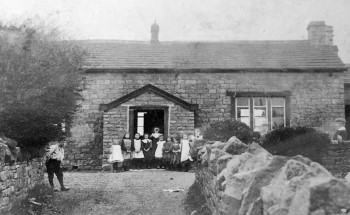
17. Stopper Lane
A number of houses in this hamlet show physical evidence associated with handloom weaving. Gondal House and Withy Down form a substantial building which was used at the beginning of the century by a joiner, Richard Spencer. However, the site predates this use and may well have been used by handloom weavers earlier in the nineteenth century. The three storey building has ranges of eight windows to the first and second floors, with triple lights to the ground floor. The rear wall has six separated openings to both first and second floors. The three storey cottages adjoining the former Methodist Chapel were also occupied by handloom weavers in the nineteenth century. The second floor rooms are lit by pairs of separated windows which suggests that worsted fabrics may have be woven here. It is known that in 1840, James & Henry Stuttard, cotton manufacturers of Roughlee and Clitheroe, had a warehouse at Stopper Lane, probably used for putting out to the local weavers.
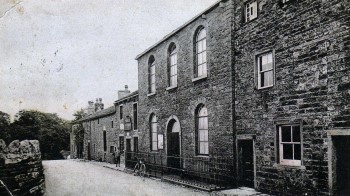
17a. Spencer’s joinery shop
In the 1880s Richard Spencer took over the joinery, wheelwrighting and undertaking business in Stopper Lane. At that time it was powered by a prominent wind sail on the top of the property, however that was blown down in a gale in 1929. Arthur Spencer, his son, in 1929 bought and converted the property now known as Spencer’s Cottage. This is very near Holmelea in the main street. In 1959 the workshop moved behind the cottage and the property in Stopper Lane was converted to the two homes.
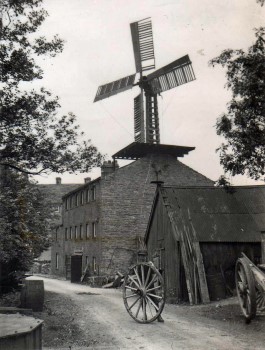
17b Stopper Lane Post Office
This was the last of four general stores in the village. It served the community for over a hundred and fifty years. Thomas Bank was the grocer here in 1841. (The 1840 Rimington Rate Book shows he was present in Stopper Lane then too, but doesn't list his occupation.) After Thomas it was run for many years by an enterprising Duckworth family, first Robert then his son John, younger brother of Francis. John also ran the Rimington shop too.
In its final years it was run merely as a post office by Mrs Joyce Gorrigan. She had strived to keep the general shop business going by introducing different innovations and offers including a cheaper brand line, pottery work by Jack Thurogood of Gisburn, Farmhouse Fayre cookery by Helen Falshaw, her husband's photography, and soft toys from the famous Sabden Treacle Miners collection which included Rimington's very own Rufus Rimington based on Rufus Carr. That line was promoted with a giant version of Rufus Rimington posed just outside the shop door. Sadly she couldn't compete with the growing competition from the supermarkets and closed the shop and just kept the post office going in a fraction of the previous shop space until she and her husband retired and moved to Clitheroe around 1999.
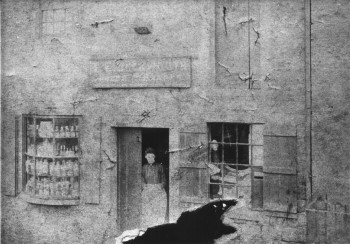
17c the Wesleyan Chapel
Cyril Ainsworth's 'A History of Methodism in The Clitheroe Circuit Vol 1' gives a detailed account of the history of Stopper Lane Wesleyan Chapel. He mentions that Methodism earlier flourished in a farmhouse at Gazegill prior to the building of the chapel at Stopper Lane which was founded in 1815. It is most well known for its association with Francis Duckworth’s hymn tune ‘Rimington’.
The chapel had a gallery, the front of which was occupied by an orchestra providing the hymn music, until an organ was installed in 1859. Francis and several of his brothers were part of the orchestra. The chapel was enlarged in 1887, and the organ was replaced a few years later. However the society numbers were never great and around 1950 were down to 10 when it was discovered that the building was unsafe due to a defective roof. Closure was recommended by a special committee in October 1963. It was also sometimes the venue for village meetings. It was converted into two homes.
18 Hedge and ditch boundary
This is an example of a hedge and ditch boundary of which there are many in the area. It is an early way of enclosing an area. A ditch was dug and the hedge planted on top of the soil from the ditch. An interesting legal point is that he boundary is the edge of the ditch, not the hedge.
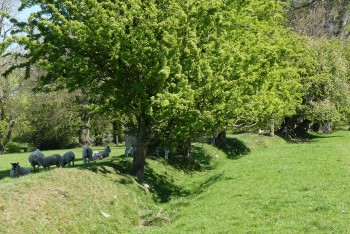
The Roman Road
Whilst not on the interpretation board the trail crosses a Roman road twice. The first time is near Windhill Laithe before Hollins and the second time is when turning left on to Robin Lane at the bottom of the hill towards Howgill Mill. There is no evidence of the road in these two locations.
This section of the Roman Road from Ribchester to Elslack crosses Rimington from near the confluence of Twiston Beck and Ings Beck, and the section finishes on Coal Pit Lane just north of Howgill Lane. Some evidence of the road can be seen near where Howgill Lane meets the A682 Its outline can also be identified in the field on the west side of Newby Lane between Salem Chapel and Newby and in the field to the east of Stopper Lane near Howcroft.
